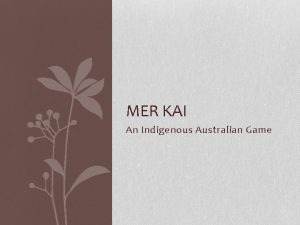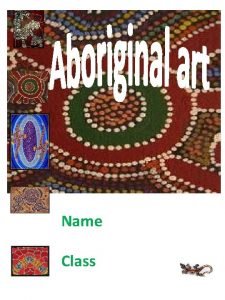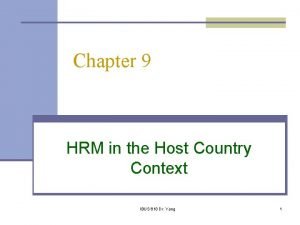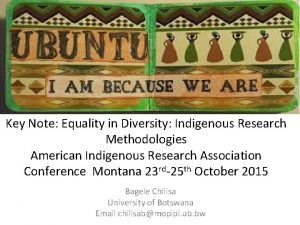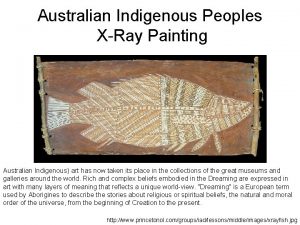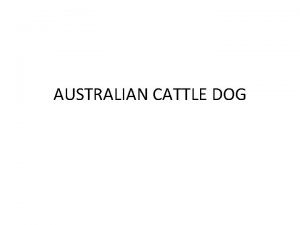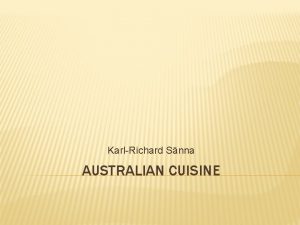MER KAI An Indigenous Australian Game Country of







- Slides: 7

MER KAI An Indigenous Australian Game

Country of Origin The game ‘Mer Kai’ originated from Australia and was invented by its Indigenous peoples. The game may be interpreted as ‘hacky sack’ however the name ‘Mer Kai’ is the traditional name of the game. Coordinates: 28 o 48’ 29. 81”S 141 o 16’ 30. 58”E

Resources • One scrunched up ball of paper. This could be made from either tissue, butcher’s paper or printing paper. • The original game states that the ball is made from possum or kangaroo skin as these were the available resources for the Indigenous peoples of Australia for thousands of years. • To cater for modern standards, natural materials that are not harmful to the environment will be used instead.

Rules • This game requires two or more players. • One player throws the ball high in the air, and the opposing player/s must then kick the ball with the side or heal of their foot to keep it in the air. • Whoever is closest to the ball is the next player to kick it. • Players may stand close together, in a circle or far apart in order to play the game. • Players who miss the ball and are unable to kick it to keep it in the air are out. • Goal: To keep the ball in the air. • Where: This game may be played in any open space that allows for players to move around easily. This may include a field, hall or park.

In this picture, players are seen standing in a circle while one of the players braces themselves to kick the ball back into the air.

Finding Resources • In order to find resources for ‘Mer Kai’, the materials needed to be considered ‘bouncy’ or easily kicked before using them. • The resources also needed to be natural and therefore not made of plastic or any other non-biodegradable materials. • Paper was the chosen material for making a simple ball to use because there are many different types of paper that can be used and it is a resource that is not harmful to the environment. • Instead of being scrunched up, the ball could also be glued or sewn together to make a more stable structure.

Bibliography • Australian Government. (2008). Mer kai. Retrieved from http: //www. ausport. gov. au/participating/indigenous/games_and_ac tivities/individual_games/ball_games/mer_kai. pdf • Australian Government. (2008). Yulunga: Traditional Indigenous games. Retrieved from http: //www. royalfarwes. schools. nsw. edu. au/documents/19016004/19016357/Yulunga%20 Gr ade%20 K-3. pdf • City of Yarra. (2010). Indigenous sporting heroes. Retrieved from http: //lrd. kangan. edu. au/indigenous%20 sporting%20 heros/start/inde x. htm • Creative Spirits. (2014). Traditional Aboriginal games and activities. Retrieved from http: //www. creativespirits. info/aboriginalculture/sport/traditionalaboriginal-games-activities
